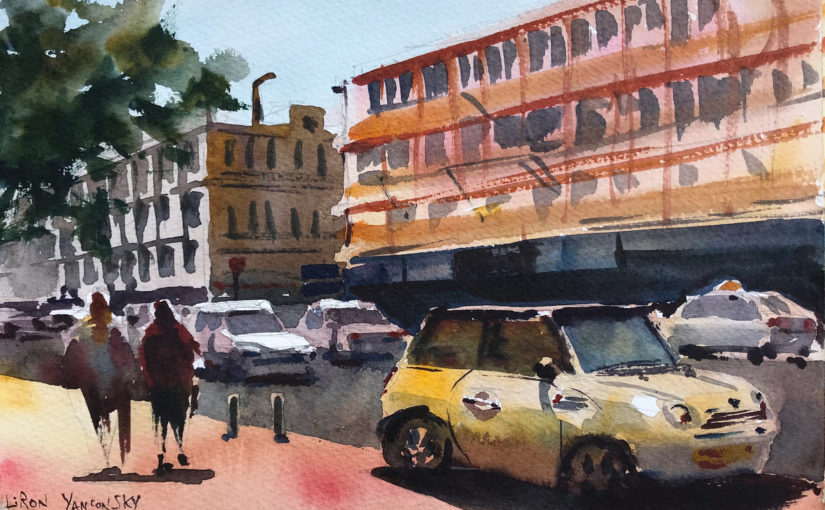Podcast: Play in new window | Download
In this episode we talked about how to become BETTER at SELLING, by thinking about the customer’s “selfish” wants and FIRST, rather than what we think we have to offer.
Marketing Didn’t Come Easy For me
I’d like to emphasize how marketing didn’t come naturally to me initially. It’s something I learned slowly and gradually.
Sales, funny enough, came more naturally. I already had the right mindset when it comes to selling and helping the customer get what they need and want.
But marketing, awakening the imagination of the customer, talking about their pain points and needs… That – I had to learn.
And you can too!
Most People Talk About Their Product
Most people tend to talk about THEIR product. The benefits it offers. What makes it good, and so on…
The problem is – most people don’t care. They only want one thing – to have their “problem” solved.
Ask Questions!
The perfect example is someone coming to my art booth and carefully observing the paintings. They show interest, so it’s fine for me to “jump in”.
But if I simply start talking about the paintings, why they are of good quality bla bla… I don’t address the customer.
Instead, I’d much rather ask questions. That way I’ll know what they want. So I may ask “Are you looking for something in particular?” or “Looking for a gift for someone?” and so on…
That way, even if they go “Nah thanks just browsing” – at least I know not to waste too much energy for the time being.
Find The Common Interest
Once you gained enough info, you can see if there’s what I like to call a “common interest”. You want to sell a painting – they are collecting paintings from around the world / want a gift for an art lover and so on…
Once there’s a common interest – selling is EASY.
And here’s another fun fact – the common interest may be – They’re just looking to have fun and look at art, and you want to share your work with someone. It doesn’t have to end up in a sale.
Online and Offline
The skillset of always thinking about the customer is extremely crucial for both selling online and selling offline.
The main difference is that offline you have more physical feedback, and you have to sort of narrate the customer’s thoughts and test out different ideas. More on that in a future episode.
Conclusion
I hope this gives you some idea of how important it is to first consider the potential client’s wants, needs and pain points.
Let me know your thoughts in a comment below!
Artist Corner – Geremia Cerri
Today we talked about geremia Cerri, a fantastic Italian watercolor painter. I love the authenticity of his work. He paints in the impressionistic style I like the most, but has a very unique “signature” of the end result.
You can check out his work here: Geremia Cerri on Facebook
And here’s where you can find me…
Check out my YouTube Channel – Liron Yanconsky
Or ask me questions on Instagram – @LironYanIL or Snapchat – @LironYan3
I hope you enjoyed this one. Take care, and we’ll talk again really soon,
— Liron


